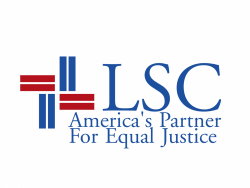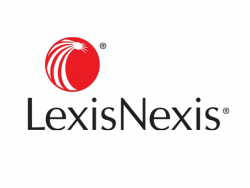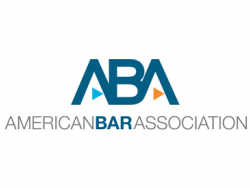Document Author
Year Published
Topic
- (-) Remove Technology filter Technology
- Research (6) Apply Research filter
- Reports, Evaluations, Best Practices, Surveys (5) Apply Reports, Evaluations, Best Practices, Surveys filter
- Articles & SRLN Briefs (3) Apply Articles & SRLN Briefs filter
- Forms (3) Apply Forms filter
- Justice Tech Entrepreneurs (3) Apply Justice Tech Entrepreneurs filter
- Reports (3) Apply Reports filter
- 100% Access to Justice (2) Apply 100% Access to Justice filter
- Conferences & Summits (2) Apply Conferences & Summits filter
- Evaluation (2) Apply Evaluation filter
- Presentations (2) Apply Presentations filter
- Regulatory Concerns (2) Apply Regulatory Concerns filter
- Scaling in Court Systems (2) Apply Scaling in Court Systems filter
- Triage (2) Apply Triage filter
- Triage & Service Portal (2) Apply Triage & Service Portal filter
- Allied Professionals (1) Apply Allied Professionals filter
- Attorney Ethics (1) Apply Attorney Ethics filter
- Best Practices for Self-Help Centers (1) Apply Best Practices for Self-Help Centers filter
- Ethics Education (1) Apply Ethics Education filter
- General Non-Profit Resources for Planning and Evaluation (1) Apply General Non-Profit Resources for Planning and Evaluation filter
- Impact of Self-Represented Litigant Innovations on Cost and Efficiency (1) Apply Impact of Self-Represented Litigant Innovations on Cost and Efficiency filter
- Integration with Institutional Process (1) Apply Integration with Institutional Process filter
- Linking a Self-Help Center to Other Services (1) Apply Linking a Self-Help Center to Other Services filter
- Self-Help Centers (1) Apply Self-Help Centers filter
- Simplification (1) Apply Simplification filter
- Strategic Planning (1) Apply Strategic Planning filter
- Trial Court Self-Help (1) Apply Trial Court Self-Help filter
- Working Groups (1) Apply Working Groups filter
State
Tags
Post date
Search results
Presentation: LiveHelp- Helping People Find Information Online (CTC 2007)
Presentation and paper delivered about the pilot LiveHelp projects during the 2007 Court Technology Conference (CTC10) by Kate Bladow, Liz Keith, Eve Ricaurte, and Richard Zorza. Please see the Project Evaluation for more information. Technology Conferenc ...
Report: LiveHelp Pilot Project Final Evaluation Report (Montana 2007)
This report evaluates LiveHelp, an experimental tool added to the LawHelp network of access to justice websites that helps those not fully familiar with legal information on the web find that information. The full report can be downloaded below. Reports T ...
Report: Equal Justice and the Digital Revolution: Using Technology to Meet the Needs of Low-Income People (CLASP & NLADA 2002)
This report describes the history of legal aid technology innovation and recommends various objectives for the legal services community to continue to improve its use of technology to provide equal justice for all. technology Reports Technology United Sta ...
Presentation: LSC Board Briefing: Technology, Collaboration and Innovation Opportunities (Bravi, Hough, O'Brien, Paul, Zorza 2011)
Briefing presented to the LSC Board in January 2011. Presenters: Scott Bravi, Chief Information Officer, Arnold and Porter Bonnie Hough, Managing Attorney, California Administrative Office of the Courts Mark O'Brien, Executive Director, Pro Bono Net ...

Conference: Legal Services Corp.'s TIG Conference (San Antonio 2015)
The Annual Technology Initiative Grant (TIG) Conference brings together leading technologists and policy makers to explore cutting edge developments. These conferences have had a profound impact on shaping how the access to justice movement uses technolog ...
Evaluation: LiveHelp (Chat) Pilot Project Final Evaluation (Zorza 2007)
This May 2007 report evaluations the LiveHelp Pilot Project, live chat services for access to justice web site users. Recommended Citation: Richard Zorza, LiveHelp Pilot Project: Chat Services for Access to Justice Web Site Users, Montana Legal Services ...

Evaluation: Massachusetts LegalHelp.org Website Usability (Massachusetts 2004)
This report evaluates the Massachusetts LegalHelp.org website for usability. EXECUTIVE SUMMARY MassLegalHelp.org is a statewide, collaborative project of the Legal Services community of Massachusetts. Along with their other two websites, MassLegalServices ...

Report: A Guide to Model Rules for Electronic Filing and Service (Lexis Nexis 2003)
This 2003 guide to model rules for e-filing discusses the use of the model rules, outlines the proposed model rules with commentary, and discusses filing and service procedures. Technology Integration with Institutional Process Regulatory Concerns Scaling ...

Website: ABA Legal Technology Resource Center
The ABA LTRC is a comprehensive resource for legal professionals interested in learning about the latest technology in the field. Link to Center: http://www.americanbar.org/groups/departments_offices/legal_technology_r... General Non-Profit Resources for ...
Article: The Access To Justice “Sorting Hat” Towards A System Of Triage And Intake That Maximizes Access And Outcomes (Zorza 2012)
In this seminal article, Richard Zorza discusses the fact that we know little of the processes by which the millions of people who approach courts, legal aid intake systems, and hotlines are directed into them, or the access services they do or do not rec ...